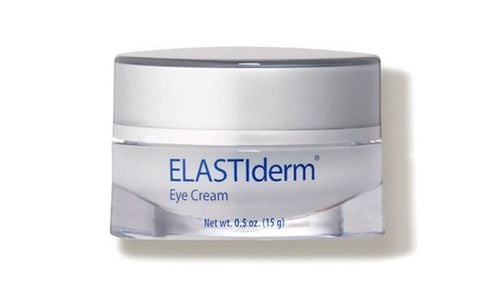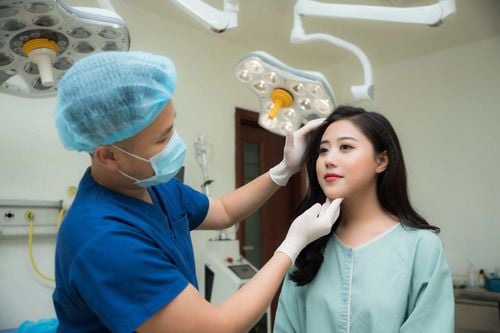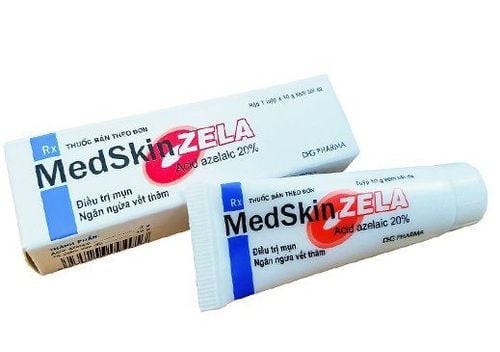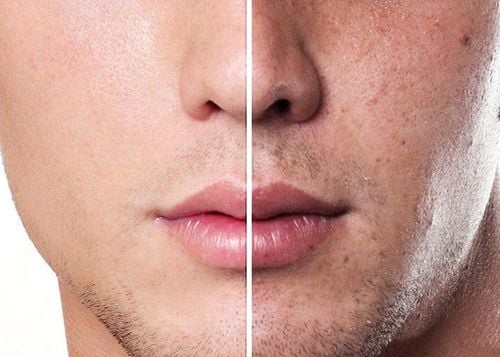This is an automatically translated article.
Melasma is a widespread skin condition characterized by the appearance of headless symmetrical pigments ranging from light to dark brown in both men and women. Melasma is less common in men, but it negatively affects the quality and aesthetics of women. The cause of skin pigmentation is often related to the sun, the influence of hormones, ...
1. Melasma in men
Melasma is a common skin condition characterized by the appearance of uneven symmetrical pigmentation ranging from light to dark brown associated with sun-exposed areas, especially on the face. Although melasma can affect all races and both sexes, it is more common in women. However, melasma negatively affects the quality of life in men as much as it does in women.
There are many detailed studies on melasma in women, while very few studies on the clinical pathology and treatment methods in men. Although, melasma in general has similar manifestations in men and women. However, there are still certain differences in the clinical, etiology and treatment of melasma in men. Hyperpigmentation on exposed areas such as the face can be a cause for cosmetic concern for patients, which can negatively impact quality of life.
SEE ALSO: Distinguishing melasma and freckles

Cả nam và nữ giới đều có nguy cơ bị nám da khi không được chăm sóc đúng cách
2. Causes of melasma in men
Currently, the exact cause of melasma is unknown. However, some of the most common factors can be caused by sun exposure, hormonal influences, and genetics. In addition, melasma was found to be more common in people with Fitzpatrick skin types IV to VI and of Asian, Hispanic, and African ancestry. Or dark-skinned men of Asian, African, and American descent. In addition, the increased incidence of melasma in Indian men may be due to the darker complexion and tropical climate of India. Some of the risk factors that increase melasma in men are:
2.1 Regular exposure to the sun
Regular exposure to the sun is a common cause of hyperpigmentation, which activates the production of the pigment melanin and leads to melasma. In which melanin acts as the skin's natural sunscreen by protecting the skin from harmful UV rays. Too much sun exposure can disrupt this process leading to hyperpigmentation.
Ultraviolet radiation (UVA and UVB) increases the proliferation and activity of melanocytes causing epidermal pigmentation, which appears more strongly in sun-exposed skin. This is further supported by the findings that melasma often improves during the winter and worsens in the summer months. Furthermore, infection rates are high in tropical regions and high altitude regions.
2.2 Congenital and genetic factors
The genetic etiology of melasma with a familial predisposition is a notable risk factor. Accordingly, the occurrence of melasma has been described in twins, suggesting a common genetic component. Besides, there are many different studies showing that a family history of melasma is seen in close family members such as mother, brother, sister, aunt, uncle, uncle, etc.
However, so far there have been no studies on the gene association with melasma. Differences in genetic predisposition in different studies and populations may be due to multifactorial causes of melasma, suggesting that disease development may be related to hormonal control of melasma. generation and environmental impacts.
MORE: What is melasma? Mechanism of formation of melasma

Bạn có thể bị nám da do yếu tố di truyền
2.3 Age
As we age, skin aging becomes more pronounced, the number of melanin-producing cells decreases, but the remaining cells increase in size and their distribution becomes more concentrated in one area of the skin. These physiological changes are explained for the increase in age spots in people over 40 years of age.
2.4 Hormonal imbalance
Hormonal influences are also the main cause of the particular hyperpigmentation known as melasma. Two studies documented low testosterone levels in Indian men with melasma. Among them, a study evaluating hormones in men with melasma showed that LH increased and low testosterone accounted for about 9.7%.
2.5 Due to drug use
Besides endogenous hormonal factors, the use of exogenous hormonal drugs or melasma agents has been shown to cause melasma. Some cases of skin pigmentation after treatment with hormone therapy. Finasteride is thought to increase testosterone which leads to the subsequent formation of melasma.
The use of cosmetics and the consumption of certain drugs with photosensitizers are also associated with the formation of melasma. An Indian study observed that the use of mustard oil for body and hair massage was more common in men with melasma accounting for 43.9%. In addition, in the study of Vazquez et al., the use of cosmetics such as soap, shaving cream, perfume was recorded in 92.6% of men with melasma.

Một số loại thuốc tăng nguy cơ nám da ở người bệnh
2.6 Due to some diseases
Some chronic diseases such as thyroid disorders, enteritis, typhoid,. .. has been identified in men with melasma. Hyperpigmentation is also a symptom of a number of diseases such as autoimmune and gastrointestinal diseases, metabolic disorders, and vitamin deficiencies.
Besides, inflammatory skin conditions, acne, atopic dermatitis, psoriasis or after an injury such as burns, chemical exposure, ... also increase skin pigmentation. From there, the skin will darken and lose color after the wound heals.
In summary, melasma in men is less common than in women, but it causes a significant impact on the patient's life. One of the leading causes of melasma in men is exposure to the sun, besides it may be genetic, hormonal imbalance,... If melasma lasts for a long time. , you can go to the medical facility at the dermatology department to be examined and have the right treatment for your skin.
Please dial HOTLINE for more information or register for an appointment HERE. Download MyVinmec app to make appointments faster and to manage your bookings easily.
References: ncbi.nlm.nih.gov, dermatologytimes.com













